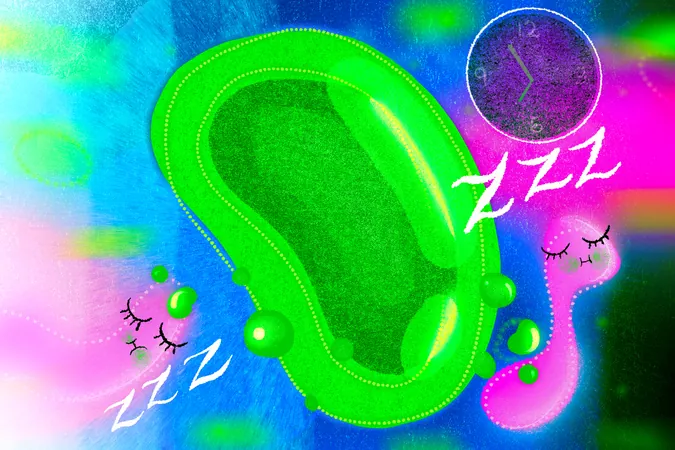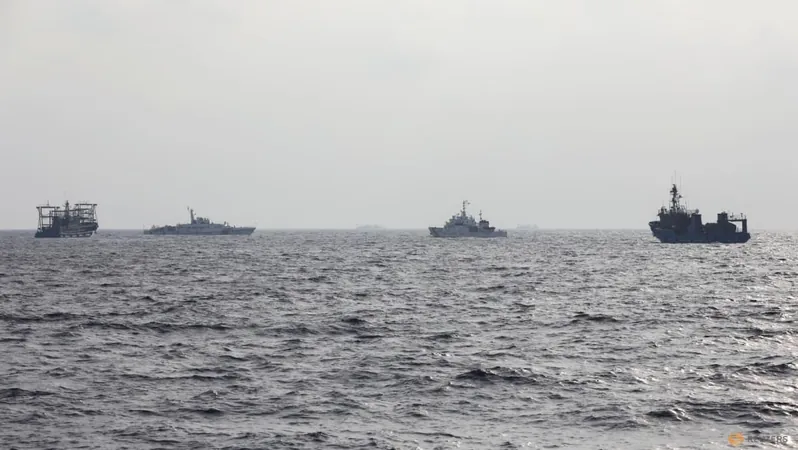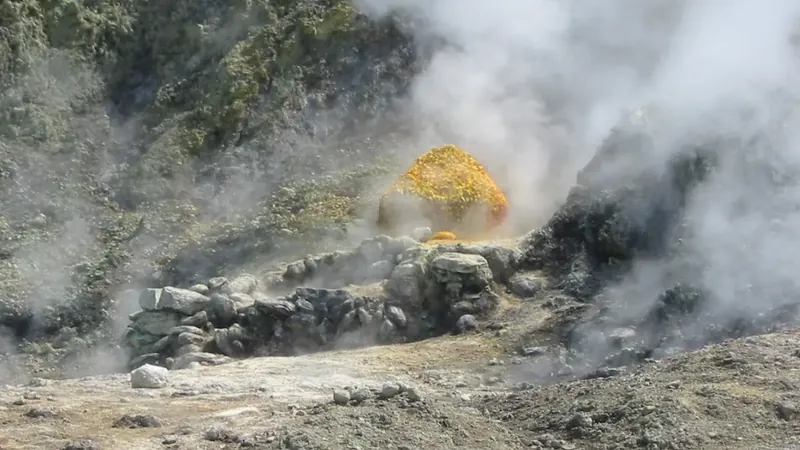
The Unseen Ocean Symphony: How Prochlorococcus Powers Marine Microbial Life
2025-01-03
Author: Arjun
Introduction
In the vast depths of our oceans, a tiny hero plays a monumental role in sustaining the marine ecosystem: Prochlorococcus marinus. These microscopic photosynthetic organisms, smaller than a human red blood cell, are not just abundant—they are the most prolific photosynthesizers on Earth. Collectively, they are responsible for fixing as much carbon as all the crops on the planet combined, highlighting their critical importance to the global carbon cycle.
Groundbreaking Research
Recent groundbreaking research from scientists at MIT has unveiled a new and exciting aspect of Prochlorococcus’s role in ocean health: the phenomenon of cross-feeding of essential DNA building blocks. Published in the journal Science Advances, this study reveals that Prochlorococcus releases valuable compounds—specifically purines and pyrimidines—into the water around them. These byproducts are then absorbed by other marine microorganisms, enriching their nutrient supply and supporting their metabolism.
Nutrient Transfer Mechanism
What’s astonishing is that this transfer of nutrients happens on a daily cycle. Prochlorococcus tends to shed these compounds during the night, allowing nearby microbes, such as SAR11—renowned as the most abundant bacteria in the ocean—to capture these nutrients efficiently. The infusion of purines and pyrimidines acts as a relaxant for SAR11, slowing its metabolism and enabling it to recharge for the daytime activities ahead.
The Role of Prochlorococcus
This intricate exchange raises an intriguing question: Is Prochlorococcus crucial in orchestrating the rhythms of ocean life? Co-author Sallie “Penny” Chisholm, an MIT Institute Professor and a pioneer in the discovery of Prochlorococcus, emphasized the significance of this relationship, likening it to a finely tuned choreography essential for the stability of marine ecosystems.
Significance of Cross-Feeding
Understanding this cross-feeding relationship is vital; it underscores a fundamental mechanism that regulates the ocean's carbon cycle. As these microorganisms form the foundation of marine life, any shift in their interactions could have cascading effects on broader ecological dynamics.
Research Methods
In their study, researchers utilized advanced techniques to analyze various strains of Prochlorococcus grown under different conditions. They determined that these microbes produce purines and pyrimidines as building blocks for DNA replication. While they recycle most of these compounds, a fraction is expelled into the surrounding water, creating a beneficial nutrient reservoir for neighboring microbes.
Environmental Factors
Through an extensive analysis involving over 600 seawater samples globally, the team investigated how environmental factors influence the consumption of these compounds by heterotrophic microbes like SAR11. Interestingly, they discovered that the strategy for utilizing purines varies with nitrogen availability in the surrounding water, indicating an evolutionary adaptation for maximizing resource utilization.
Laboratory Experiments
The study culminated in laboratory experiments showing how purines specifically affect SAR11 metabolism. Interestingly, the presence of these compounds led to a slowdown in growth under normal conditions, but under stress, the bacteria thrived—a revealing insight into their metabolic flexibility and resilience.
Prochlorococcus as a Conductor
With this new knowledge, researchers suggest that Prochlorococcus may act as a conductor in the ocean's metabolic symphony, synchronizing the activities of myriad microbial communities as they respond to the daily rhythms of light and nutrient availability. This profound discovery invites us to re-evaluate not just how we view ocean ecosystems but also reinforces the idea that even the smallest organisms have the power to shape global processes essential for life on Earth.
Conclusion
As this field of study continues to grow, we are reminded of the delicate balance within our oceans and the unseen interactions that sustain vibrant marine ecosystems. This research, supported by organizations like the Simons Foundation and the National Science Foundation, is paving the way for a deeper understanding of our planet and the vital roles played by its smallest inhabitants.



 Brasil (PT)
Brasil (PT)
 Canada (EN)
Canada (EN)
 Chile (ES)
Chile (ES)
 Česko (CS)
Česko (CS)
 대한민국 (KO)
대한민국 (KO)
 España (ES)
España (ES)
 France (FR)
France (FR)
 Hong Kong (EN)
Hong Kong (EN)
 Italia (IT)
Italia (IT)
 日本 (JA)
日本 (JA)
 Magyarország (HU)
Magyarország (HU)
 Norge (NO)
Norge (NO)
 Polska (PL)
Polska (PL)
 Schweiz (DE)
Schweiz (DE)
 Singapore (EN)
Singapore (EN)
 Sverige (SV)
Sverige (SV)
 Suomi (FI)
Suomi (FI)
 Türkiye (TR)
Türkiye (TR)
 الإمارات العربية المتحدة (AR)
الإمارات العربية المتحدة (AR)